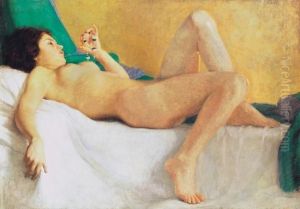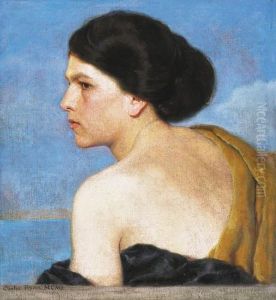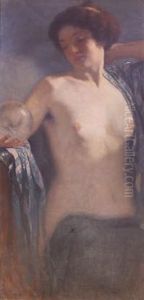Artur Coulin Paintings
Artur Coulin was a Romanian painter and graphic artist, renowned for his contributions to the development of Romanian art at the turn of the 20th century. Born on November 27, 1869, in Arad, which was then part of the Austro-Hungarian Empire and is now in Romania, Coulin was part of the region's significant German community. He demonstrated artistic talent from a young age and pursued his passion for art through education and travel.
Coulin studied at the Budapest School of Fine Arts and later at the Academy of Fine Arts in Munich, a city that was a major European art center at the time. His studies in Munich were particularly influential in shaping his artistic style. During his time there, he was exposed to various contemporary art movements and techniques, which would later be reflected in his work.
After completing his studies, Coulin traveled extensively, including through Italy, where he was inspired by the Renaissance masters. He eventually settled in Transylvania, where he became a central figure in the artistic life of the region. Coulin's work was characterized by a combination of traditional elements and modern art tendencies. He was particularly known for his portraits and landscapes, which often depicted the natural beauty of the Transylvanian countryside and the traditional life of its people.
Tragically, Artur Coulin's life and career were cut short when he died on May 30, 1912, at the young age of 42. Despite his premature death, Coulin's legacy endured. He was a key member of the artistic group 'Siebenbürgischer Kunstverein,' which played a significant role in the cultural life of the region. His works are now considered important contributions to Romanian art, capturing a unique blend of regional characteristics and European artistic trends of the era.


